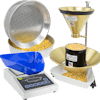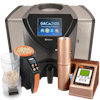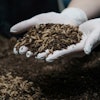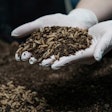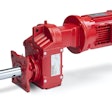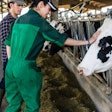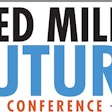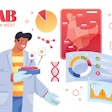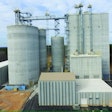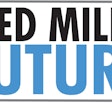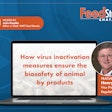Optical bin sensors deliver real-time feed data to improve operational efficiency, reduce transportation costs
Knowing how much feed on-farm poultry and livestock producers need — and when they need it — is critical for feed producers to manage their mills, production schedules and staff. Traditionally, feed producers have relied on their customer’s manual estimates, which leave room for error.BinSentry, a feed bin optical sensor supplier, aims to take the guesswork out of feed production by automating customer needs based on precise inventory data.
BinSentry CEO Ben Allen joins the Chat to talk about how precision data can lower the costs of production and improve operational efficiency.
How to reduce feed costs with sensors, data precisionfromWATT Global MediaonVimeo.
Transcription of Feed Strategy Chat with Ben Allen, CEO of BinSentry
Jackie Roembke, editor in chief, WATT Feed Brands/Feed Strategy:Hi, everyone. Welcome to Feed Strategy Chat. I’m your host, Jackie Roembke, editor in chief of WATT Feed Brands and Feed Strategy magazine.
Today’s Chat is brought to you byBinSentry, an ag tech leader in animal feed data precision and management. BinSentry’s mission is to build the Feed Mill of the Future to support supply chain efficiency, worker safety and environmental sustainability. Through its innovative 3-D optical sensors and advanced software technology, BinSentry is automating feed inventory tracking and decision-making, and helping feed mills and producers improve employee safety, profitability and sustainability as they work to provide high-quality protein for a growing global population.
Today, we’re talking to Ben Allen, CEO of BinSentry, an ag tech leader with a track record of rapidly generating revenue in fast-evolving business and economic environments. He’s here today to explore how high feed data precision can reduce costs dramatically and improve operational efficiency to new levels as feed manufacturers face a new challenging year.
Hi, Ben, how are you today?
Ben Allen, CEO, BinSentry:I’m doing well. Jackie, thanks for having me.
Roembke:Excellent. So glad that you’re here. Well, let’s get right into it. So feed producers generally rely on customers to place feed orders, or live operation managers to send feed inventory information. What issues does this current manual system create for the feed mills?
Allen:Feed mills work really hard to have the best data available. Unfortunately, most of it is manually procured. So we’ve got people climbing ladders to peer down into bins, we hit them on the side with hammers, we estimate in different ways what we think the feed consumption is going to be and what our inventories are. But unfortunately, we’ve reached the limit of what we can do with the data accuracy with these manual processes, and the inaccurate data backs up and creates expenses at the feed mill.
它迫使它们更加反动通用电气t data from the field. They don’t know how precise it is so it’s hard to dial in their delivery schedules or their manufacturing schedules and their changeovers from one product to the other. It’s also hard to reduce overtime or weekend labor because they’re always playing catchup and reacting to what’s happening in the field with inaccurate data.
We’re working very hard on that. The industry is good at being able to know what the averages are. It’s just that the next step of cost reduction, from a feed perspective, it is about having significantly better data on what’s happening with the consumption at the barn sites.
Roembke: Is this different for retail feed mills as opposed to feed mills that are owned by integrators?
Allen:Not necessarily. If you’re a retail feed mill, obviously, you’re trying to keep a lot of customers happy and, receiving orders for all kinds of different feeds, you have a lot of SKUs to manage. If you’re an animal integrator, [it means] fewer SKUs, fewer types of feed, but you’re also moving heavy volumes and trying to keep those animals fed and happy.
In both cases, not having great data creates more expenses, more weekend hours, more changeovers for product that you didn’t expect when you get an ASAP order on a Sunday afternoon, for instance, and more miles driven. Transportation is expensive, finding drivers is hard to do — especially on Sunday shifts for the industry. That’s a real challenge. But it’s hard to get away from those reactionary policies to keep the customers happy.
On the animal side, if you can’t see out there and see exactly what the inventories are, it’s the difference between knowing you can put 12.5 tons into a bin versus thinking maybe we can do 10 [tons]. Those little differences in the data — and then the delivery schedules and the management practices — add up to significant costs over the course of a year.
Roembke:Very good.How can companies move toward better data and better visibility of animal feed consumption at the barn sites?
Allen:In many cases, it’s technology. You know, we’ve kind of pushed the manual processes as far as they can go. We know, in general, what animals should eat, we know what our averages should be, but the averages just aren’t good enough for us anymore.
You can install scales, but that’s heavy [capital expenditure] and doesn’t necessarily come with the software tools. Or you can use BinSentry. We’ve got the industry leading optical sensor, we literally map the surface of feed inventory inside of the bins. You can see if you have a maintenance issue, where feed is hanging up, and we do it with scale-like accuracy.
You can trust the data and have the tools to know that from any laptop in the office. You can check into any bin and know more about what’s going on in that bin than the people that are at the site actually working with those animals.
Roembke: How does this visibility affect the operations at the mill?
Allen:Well, there’s a real change from when all the data is coming from the field — and it’s less accurate because of the manual processes — to knowing exactly what’s happening in the field from any laptop. It means that all of a sudden the staff at the mill that handle these orders have better data than the people that are working at the barn sites. That’s a huge shift in terms of who has the best data, but the mill needs that data. They need to be able to know what feed has to be where, when it needs to be there, and how to balance their truckloads so they’re reducing miles driven. They’re reducing ASAP orders and surprises because that creates changeovers in the mill manufacturing.
They’re also really dialing in the precision with which they can deliver. They can know to the half-ton what they can put, in terms of the feed delivery, in what bins, on what sites. And if they’ve got overflow orders, or extra partial orders, they can look into the computer and see exactly where they can place those without calling around and guessing.
Increasing data precision is the best way to dial down costs for animal feed, which is one of the most expensive costs in animal production today.
Roembke:谢谢你的见解。如果你想要e more information about the technologies that have been mentioned here today, please visitwww.binsentry.com.
Thank you so much, Ben, and thanks to you for tuning in.

